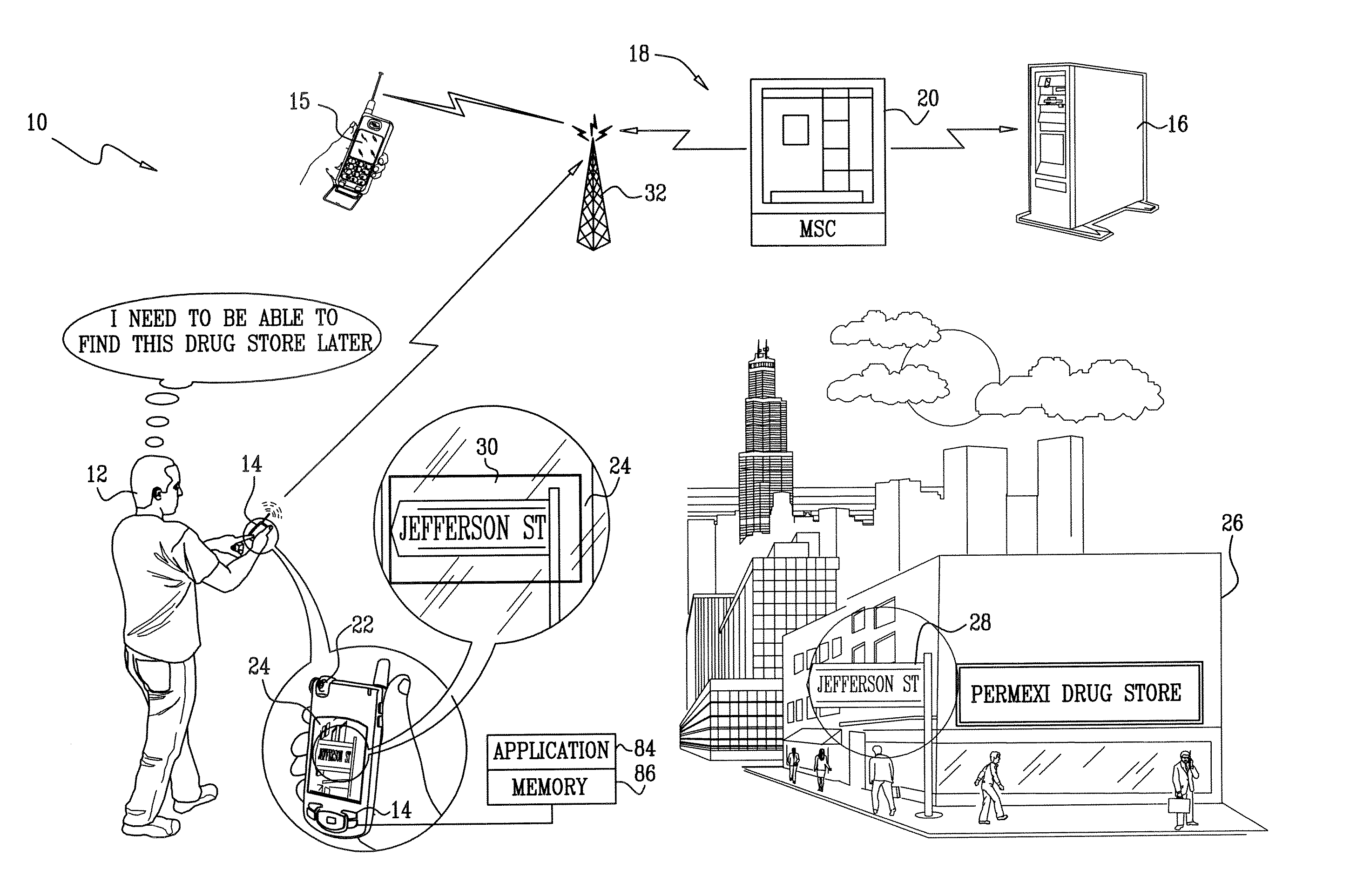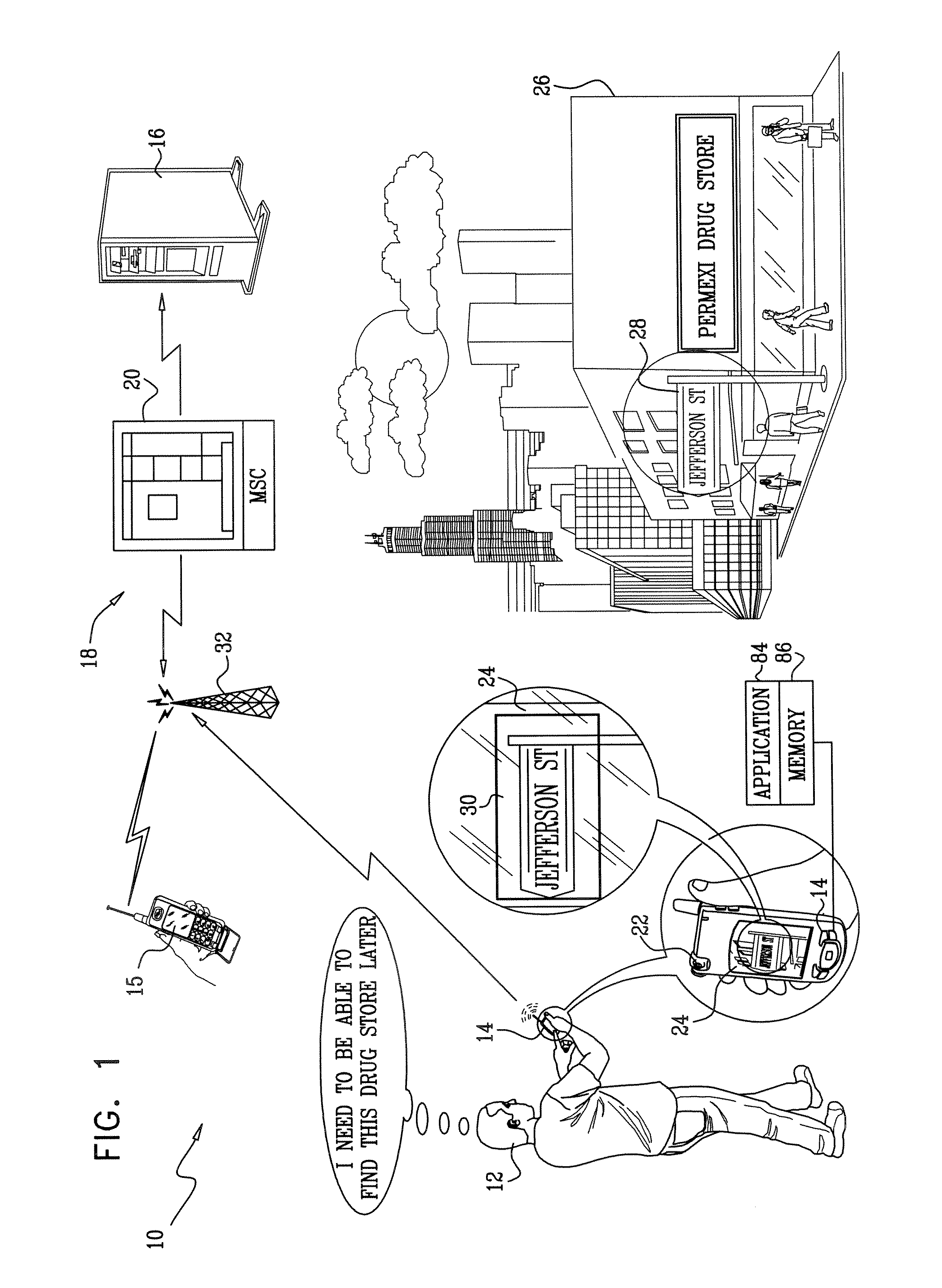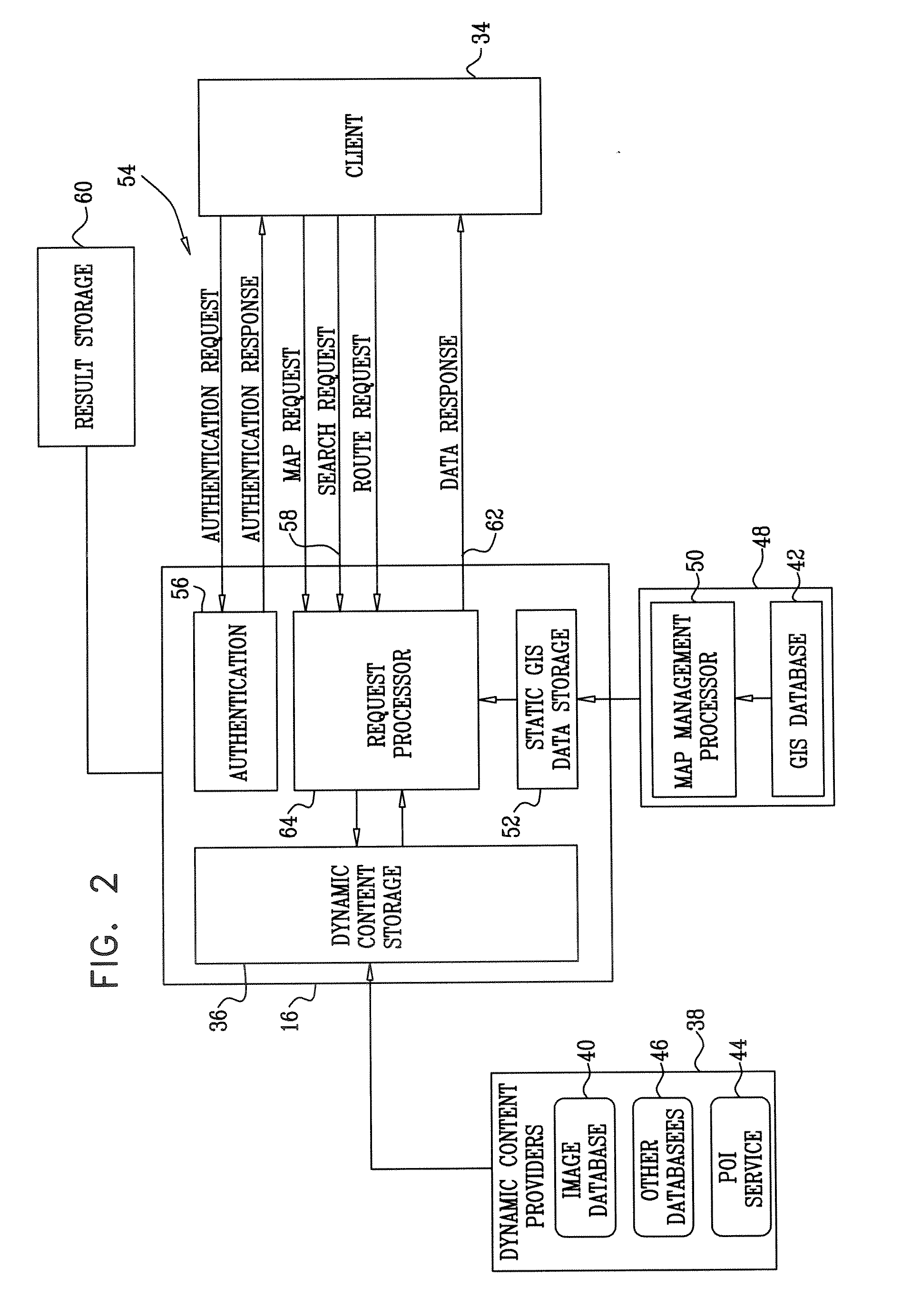Visual inputs for navigation
a navigation system and input interface technology, applied in surveying, navigation, navigation instruments, etc., can solve the problems of inability to fully understand the voice interface, inability to provide navigation information, etc., to achieve enhanced performance
- Summary
- Abstract
- Description
- Claims
- Application Information
AI Technical Summary
Benefits of technology
Problems solved by technology
Method used
Image
Examples
embodiment 1
[0029] Turning now to the drawings, reference is initially made to FIG. 1, which is a simplified pictorial illustration of a real-time navigation system 10 constructed and operative in accordance with a disclosed embodiment of the invention. In this illustration, a pedestrian 12, using a wireless device 14, communicates with a map server 16 via a commercial wireless telephone network 18. The network 18 may include conventional traffic-handling elements, for example, a mobile switching center 20 (MSC), and is capable of processing data calls using known communications protocols. The mobile switching center 20 is linked to the map server 16 in any suitable way, for example via the public switched telephone network (PSTN), a private communications network, or via the Internet.
[0030] The wireless device 14 is typically a handheld cellular telephone, having an integral photographic camera 22. A suitable device for use as the wireless device 14 is the Nokia® model N73 cellular telephone,...
embodiment 2
[0052] Irrespective of whether a visual input to the wireless device is stored within an application, or as MMS-compliant data, address recognition is still required. In Embodiment 1, this process was conducted in the map server 16 (FIG. 1). In this embodiment, OCR and language post-processing are performed on the client device.
[0053] Reference is now made to FIG. 4, which is a pictorial diagram of a wireless device 90 that is constructed and operative for generating visual input for navigation in accordance with a disclosed embodiment of the invention. The wireless device 90 is similar to the wireless device 14 (FIG. 1), but has enhanced capabilities. An OCR engine 92 and optionally a language processor 94 now provide the functionality of the OCR engine 74 and language processor 76 (FIG. 3), respectively, enabling address recognition of a visual image to be performed by the wireless device 90, in which case the OCR engine 74 and language processor 76 in the map server 16 (FIG. 2) ...
PUM
 Login to View More
Login to View More Abstract
Description
Claims
Application Information
 Login to View More
Login to View More - R&D
- Intellectual Property
- Life Sciences
- Materials
- Tech Scout
- Unparalleled Data Quality
- Higher Quality Content
- 60% Fewer Hallucinations
Browse by: Latest US Patents, China's latest patents, Technical Efficacy Thesaurus, Application Domain, Technology Topic, Popular Technical Reports.
© 2025 PatSnap. All rights reserved.Legal|Privacy policy|Modern Slavery Act Transparency Statement|Sitemap|About US| Contact US: help@patsnap.com



